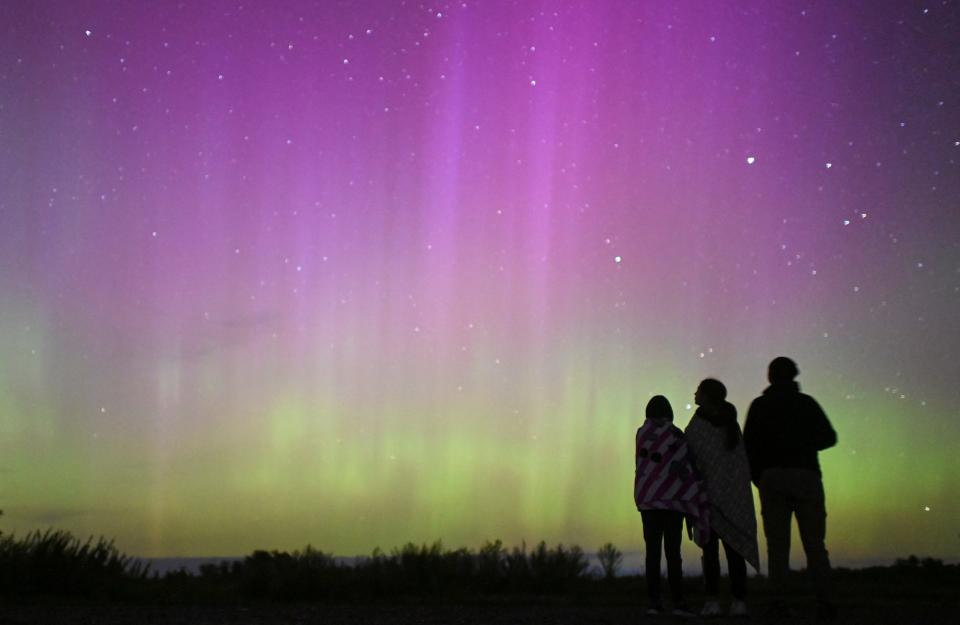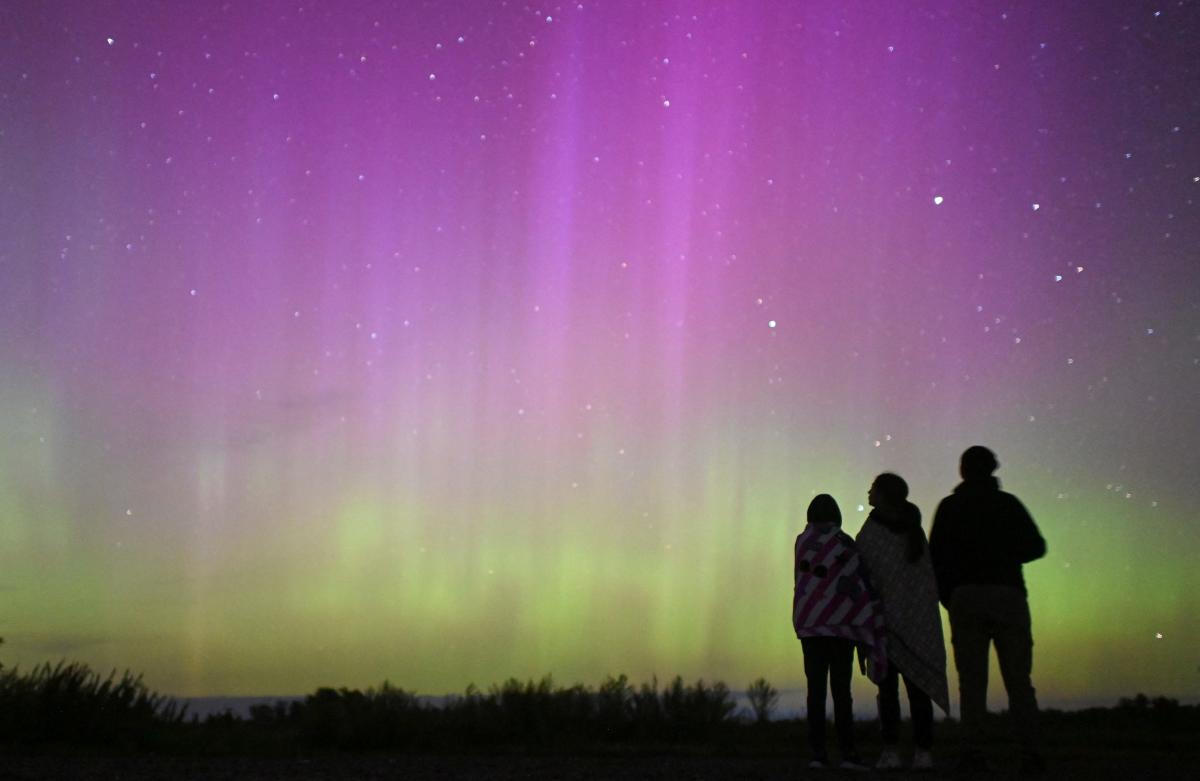Colorful northern lights could be visible across several states Thursday night from the Pacific Northwest, upper Midwest and Northeast.
While most visible in Alaska and Canada, residents from Oregon to New York may also have a chance to view the stunning phenomena known as the Auroras Borealis, according to the National Oceanic and Atmospheric Administration’s Space Weather Prediction Center.
After solar eruptions launched on Tuesday, the center issued a moderate G2 geomagnetic storm watch as northern lights activity will be elevated Thursday night. If the forecasted geomagnetic storm levels are met, the eruption of solar material and magnetic fields will present the beloved natural lights in the sky.
A Kp level 6 has been issued, indicating that the aurora will be brighter and more active as it moves further from the poles.
“At this geomagnetic activity level, it might be possible to see the aurora from the northern edge of the United States,” the center states.
In August, the auroras were visible as far south as Alabama and west to northern California following a severe geomagnetic solar storm with at least five flares with ejections.
States that could see northern lights
Americans in at least 17 states will have a chance to see the northern lights Thursday night.
The following continental U.S. states fall within aurora’s view line:
Washington
Oregon
Idaho
Montana
Wyoming
North Dakota
South Dakota
Nebraska
Minnesota
Iowa
Wisconsin
Illinois
Michigan
New York
Vermont
New Hampshire
Maine
When will the northern lights be visible?
The aurora is expected to be bright, active and visible in parts of 17 continental U.S. states on Thursday night, Sept. 12, 2024.


What are auroras, and how do the northern lights work?
Auroras are ribbons of light that weave across Earth’s northern or southern polar regions, according to NASA.
Geomagnetic storms are caused by solar activity like solar flares or coronal mass ejections. The solar wind moves energetic charged particles from these events away from the sun to producer the northern lights.
Can you see northern lights with naked eye?
Northern lights can be safely viewed without a telescope or microscope. The visibility of the aurora depends on multiple factors from location, weather, time of night and the level of geomagnetic activity presenting.
Contributing: Doyle Rice and Dinah Voyles Pulver
This article originally appeared on USA TODAY: Northern lights may be visible this week across these 17 states

